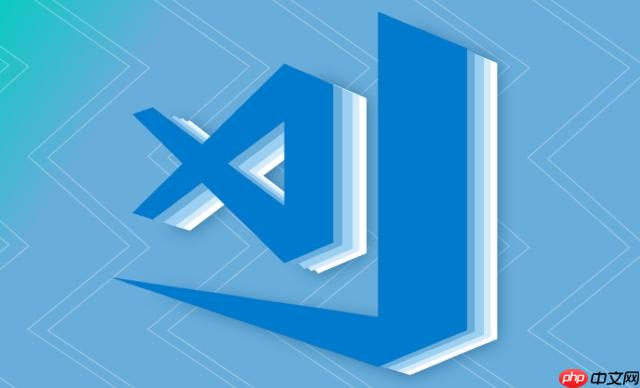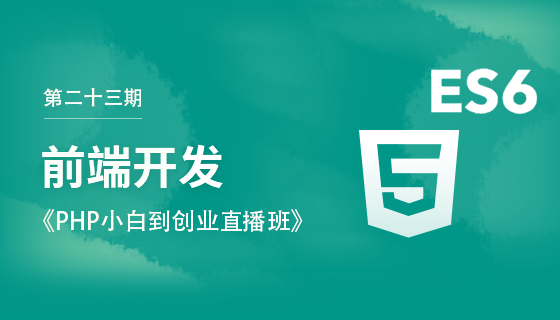答案:在VSCode中调试需输入的程序时,应确保程序在集成终端或外部终端运行。通过配置launch.json文件,将"console"设为"integratedTerminal"或"externalTerminal",以支持交互式输入;若需从文件读取输入,可使用shell重定向(如< input.txt)或修改程序直接读取文件,避免依赖标准输入。

在VSCode调试程序时,如果你的程序需要用户输入数据,最直接且推荐的方式是利用VSCode的集成终端(Integrated Terminal)。它提供了一个完整的交互式环境,让你的程序可以像在普通命令行下一样接收键盘输入。当然,根据具体需求和语言环境,我们也可以通过配置
launch.json
当你在VSCode中运行或调试一个需要输入数据的程序时,核心在于确保程序在一个能够接收标准输入(stdin)的环境中运行。
通常情况下,如果你直接点击运行按钮(绿色三角形)或者通过调试面板启动调试,VSCode会默认尝试在“调试控制台”(Debug Console)或集成终端中运行你的程序。对于需要交互式输入的程序,你需要确认它是在集成终端中运行的。
使用集成终端进行交互式输入: 这是最常见也最方便的方法。
运行(Run)
启动调试(Start Debugging)
F5
如果你的程序没有在集成终端中启动,或者你发现调试控制台不接受输入,你需要检查或创建你的
launch.json
配置launch.json
launch.json
Ctrl+Shift+P
Cmd+Shift+P
debug
Debug: Open launch.json
configurations
console
"integratedTerminal"
"externalTerminal"
示例 (Python):
{
"version": "0.2.0",
"configurations": [
{
"name": "Python: Current File",
"type": "python",
"request": "launch",
"program": "${file}",
"console": "integratedTerminal", // 确保这里是 integratedTerminal
"justMyCode": true
}
]
}示例 (C++ with GDB/LLDB):
{
"version": "0.2.0",
"configurations": [
{
"name": "(gdb) Launch",
"type": "cppdbg",
"request": "launch",
"program": "${workspaceFolder}/a.out", // 你的可执行文件路径
"args": [],
"stopAtEntry": false,
"cwd": "${workspaceFolder}",
"environment": [],
"externalConsole": false, // 如果设置为 true,则使用外部终端
"MIMode": "gdb",
"setupCommands": [
{
"description": "Enable pretty-printing for gdb",
"text": "-enable-pretty-printing",
"ignoreFailures": true
}
],
"console": "integratedTerminal" // 或者 "externalTerminal"
}
]
}一个小提示: 很多时候,初学者会发现程序在“调试控制台”中运行,但输入不起作用。这是因为“调试控制台”主要用于显示调试器的输出、日志和执行简单的调试命令,它通常不直接支持程序的标准输入。所以,务必将
console
"integratedTerminal"
"externalTerminal"
这是一个非常普遍的疑问,尤其对于刚接触VSCode调试的新手来说。简单来说,VSCode中的“输出”面板(Output Panel)和“调试控制台”(Debug Console)与“终端”(Terminal)面板的功能是不同的,它们各自承担着特定的角色。
“输出”面板主要用来显示扩展、任务或其他后台进程的日志信息,比如编译器的错误信息、Linter的警告等,它是一个单向的信息流,只出不进。
而“调试控制台”呢,它更像是调试器与你沟通的桥梁。在这里,你可以看到程序的标准输出(
stdout
stdin
input()
scanf()
cin >>
真正的交互式输入,也就是你程序所期待的键盘输入,需要一个完整的终端环境来提供。这正是“终端”面板(Integrated Terminal)或外部终端的作用。它们模拟了一个真实的命令行环境,程序可以在这里接收键盘输入,并将其作为标准输入处理。所以,当你的程序需要输入时,一定要确保
launch.json
"console"
"integratedTerminal"
"externalTerminal"
有时候,你可能希望程序在一个独立的命令行窗口中运行和接收输入,而不是在VSCode内部的集成终端。这可能是因为你想要一个更纯净的终端环境,或者需要同时查看VSCode的其他面板而不被终端占据。配置
launch.json
你需要在你的调试配置中,将
"console"
"externalTerminal"
以下是不同语言的launch.json
对于Python程序:

十天学会易语言图解教程用图解的方式对易语言的使用方法和操作技巧作了生动、系统的讲解。需要的朋友们可以下载看看吧!全书分十章,分十天讲完。 第一章是介绍易语言的安装,以及运行后的界面。同时介绍一个非常简单的小程序,以帮助用户入门学习。最后介绍编程的输入方法,以及一些初学者会遇到的常见问题。第二章将接触一些具体的问题,如怎样编写一个1+2等于几的程序,并了解变量的概念,变量的有效范围,数据类型等知识。其后,您将跟着本书,编写一个自己的MP3播放器,认识窗口、按钮、编辑框三个常用组件。以认识命令及事件子程序。第
 3
3

{
"version": "0.2.0",
"configurations": [
{
"name": "Python: Current File (External Terminal)",
"type": "python",
"request": "launch",
"program": "${file}",
"console": "externalTerminal", // 关键在这里!
"justMyCode": true
}
]
}当你启动这个配置时,VSCode会弹出一个新的命令行窗口(例如Windows上的
cmd.exe
PowerShell
对于C/C++程序 (使用cppdbg
{
"version": "0.2.0",
"configurations": [
{
"name": "(gdb) Launch (External Terminal)",
"type": "cppdbg",
"request": "launch",
"program": "${workspaceFolder}/build/my_program", // 替换为你的可执行文件路径
"args": [],
"stopAtEntry": false,
"cwd": "${workspaceFolder}",
"environment": [],
"externalConsole": true, // 对于cppdbg,通常是设置这个
"MIMode": "gdb",
"setupCommands": [
{
"description": "Enable pretty-printing for gdb",
"text": "-enable-pretty-printing",
"ignoreFailures": true
}
],
// "console": "externalTerminal" // 对于cppdbg,externalConsole: true 往往就足够了,但也可以加上这个明确
}
]
}对于C/C++的
cppdbg
"externalConsole": true
"console": "externalTerminal"
cppdbg
使用外部终端的好处是,它提供了一个完全独立的运行环境,不会与VSCode的UI争抢焦点,也不会被其他VSCode面板的内容所干扰。这在调试一些需要大量终端输出或复杂交互的程序时尤其有用。不过,缺点是每次启动调试都会弹出一个新窗口,调试结束后可能需要手动关闭。
在开发和调试过程中,尤其是在进行单元测试、集成测试或者需要反复测试特定输入场景时,手动输入数据会变得非常繁琐且容易出错。从文件中读取预设的输入数据是一个非常高效且实用的策略。这通常可以通过两种主要方式实现:利用shell的输入重定向功能,或者在
launch.json
利用Shell的输入重定向(适用于集成终端或外部终端): 这是最通用且跨语言的方法。它利用了操作系统shell的特性,将一个文件的内容作为程序的标准输入。
准备输入文件: 首先,创建一个文本文件(例如
input.txt
input.txt
Hello VSCode 123 45.67
配置launch.json
launch.json
"console"
"integratedTerminal"
"externalTerminal"
"program"
"args"
对于Python程序:
{
"version": "0.2.0",
"configurations": [
{
"name": "Python: Read from File (Integrated Terminal)",
"type": "python",
"request": "launch",
"program": "${file}",
"console": "integratedTerminal",
"args": ["<", "input.txt"], // 将 input.txt 的内容重定向为标准输入
"justMyCode": true
}
]
}这里需要注意的是,直接在
"args"
"<", "input.txt"
"preLaunchTask"
更通用的方法(通过tasks.json
launch.json
tasks.json
.vscode/tasks.json
{
"version": "2.0.0",
"tasks": [
{
"label": "run_with_file_input",
"type": "shell",
"command": "python ${file} < input.txt", // 替换为你的语言和程序
"group": {
"kind": "build",
"isDefault": true
},
"presentation": {
"reveal": "always",
"panel": "new"
}
}
]
}launch.json
{
"version": "0.2.0",
"configurations": [
{
"name": "Debug with File Input (Task)",
"type": "python", // 你的语言类型
"request": "launch",
"program": "${file}",
"console": "integratedTerminal",
"preLaunchTask": "run_with_file_input", // 在调试前执行这个任务
"stopOnEntry": false // 如果需要调试器停在入口,可以设置为true
// 注意:当使用preLaunchTask来执行带重定向的命令时,program和args可能就不需要了,
// 因为程序已经在task中被执行了。这里可能需要根据调试器的具体行为调整。
// 实际上,更常见的做法是让task只负责构建,然后launch配置负责运行和调试。
// 如果要调试,通常需要调试器能够“attach”到正在运行的进程,或者直接在launch配置中进行重定向。
}
]
}对于Python,直接在
launch.json
"args"
"console": "integratedTerminal"
python your_program.py < input.txt
args
对于C/C++程序 (使用cppdbg
miDebuggerArgs
args
<
args
{
"version": "0.2.0",
"configurations": [
{
"name": "(gdb) Launch with File Input",
"type": "cppdbg",
"request": "launch",
"program": "${workspaceFolder}/build/my_program", // 你的可执行文件
"args": [], // 程序的实际命令行参数
"stopAtEntry": false,
"cwd": "${workspaceFolder}",
"environment": [],
"externalConsole": false, // 或者 true,取决于你希望在哪里看到输出
"MIMode": "gdb",
"setupCommands": [
{
"description": "Enable pretty-printing for gdb",
"text": "-enable-pretty-printing",
"ignoreFailures": true
}
],
"console": "integratedTerminal",
// 最直接的方式是在终端中手动执行带重定向的命令
// 或者,对于某些调试器,可能可以通过miDebuggerArgs传递GDB命令
// 例如: "miDebuggerArgs": ["-x", "run_with_input.gdb"]
// 其中run_with_input.gdb包含 "run < input.txt"
}
]
}与Python类似,对于C/C++,最直接在调试时从文件获取输入的方法,仍然是在
integratedTerminal
externalTerminal
your_program < input.txt
launch.json
"preLaunchTask"
通过程序内部逻辑读取文件(适用于任何调试环境): 这是最灵活但需要修改程序代码的方法。与其让程序从标准输入读取,不如直接修改程序,让它从一个指定的文件中读取数据。
修改你的程序代码:
# Python 示例
with open('input.txt', 'r') as f:
data = f.readline().strip()
num = int(f.readline().strip())
# ... 继续从文件f中读取数据
print(f"Read from file: {data}, {num}")// C++ 示例
#include <iostream>
#include <fstream>
#include <string>
int main() {
std::ifstream inputFile("input.txt");
if (!inputFile.is_open()) {
std::cerr << "Error opening input.txt" << std::endl;
return 1;
}
std::string line;
int num;
inputFile >> line >> num; // 从文件读取
std::cout << "Read from file: " << line << ", " << num << std::endl;
inputFile.close();
return 0;
}调试配置: 此时,你的
launch.json
console
args
"internalConsole"
"integratedTerminal"
"externalTerminal"
这种方法的好处是完全独立于调试器和shell的特性,程序本身就具备了从文件读取输入的能力。缺点是需要修改代码,这可能不适用于所有场景,尤其是在你希望测试程序标准输入处理逻辑时。
综合来看,对于调试时从文件读取预设输入,最简洁且不修改代码的方法是利用shell的输入重定向,这要求你将
console
"integratedTerminal"
"externalTerminal"
tasks.json
以上就是VSCode语言怎么输入数据_VSCode调试时程序输入数据的交互教程的详细内容,更多请关注php中文网其它相关文章!

每个人都需要一台速度更快、更稳定的 PC。随着时间的推移,垃圾文件、旧注册表数据和不必要的后台进程会占用资源并降低性能。幸运的是,许多工具可以让 Windows 保持平稳运行。




Copyright 2014-2025 https://www.php.cn/ All Rights Reserved | php.cn | 湘ICP备2023035733号